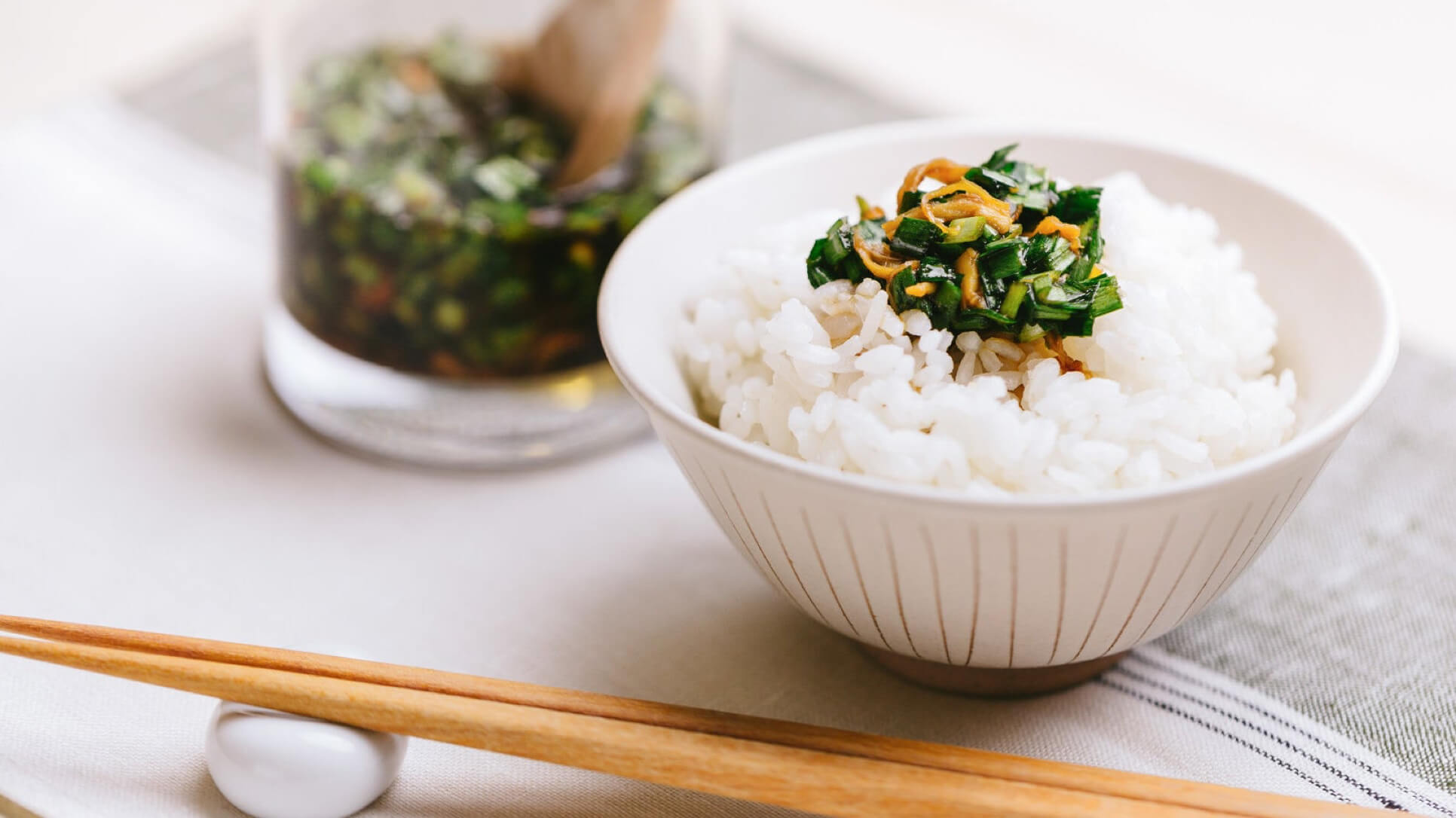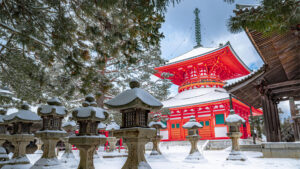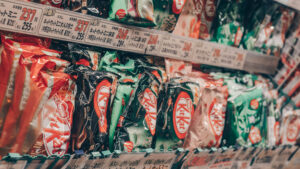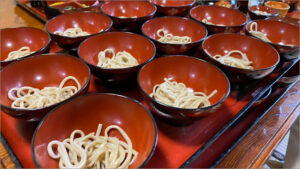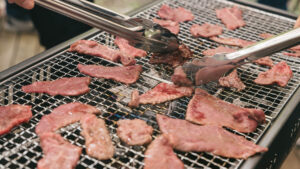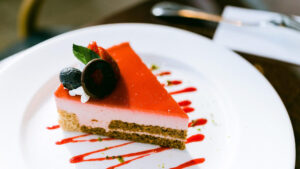Japanese tableware is more than just “dishes.”
It is a form of living art, where seasonal designs, delicate craftsmanship, and functional beauty come together to elevate everyday meals.
In this complete guide, we’ll explore why Japanese tableware is beloved around the world, introduce beginner-friendly sets, highlight gift-worthy pieces and stylish accents, and share tips on how to choose and where to buy authentic Japanese dishes.
Contents
Why Japanese Tableware Is Loved Around the World
Japanese tableware is beloved worldwide for its beauty, functionality, and deep cultural roots.
It is more than just a vessel for serving food — it embodies the Japanese sense of aesthetics, sensitivity to the seasons, and attention to detail.
In this section, we’ll explore what makes Japanese tableware so special from the perspective of everyday use.
Bringing Beauty into Everyday Life
Seasonal Designs That Reflect Nature
Many Japanese dishes feature designs that reflect the changing seasons — cherry blossoms in spring, maple leaves in autumn, and so on.
It is a common custom in Japan to change tableware according to the season, which adds a sense of harmony and awareness to daily meals.
This tradition is a cultural expression of “tasting the seasons,” where the plate and food become one artistic experience.
Tableware That Enhances the Dish
In Japanese cuisine, presentation is just as important as taste.
The choice of tableware — its color, shape, and texture — enhances the appearance of the dish itself.
For example, a simple earthenware rice bowl complements white rice beautifully, while vibrant sashimi is made more vivid on a dark blue square plate.
This harmony between food and dish is one reason Japanese tableware is often considered a form of art.
The Balance of Usability and Artistic Value
Japanese tableware is not only beautiful but also highly functional.
Many pieces are designed to be light and easy to hold, stackable for storage, and practical for daily use.
At the same time, each piece expresses individuality and artistic flair, making every meal feel special.
This balance of practicality and beauty is a major reason why Japanese tableware is so highly valued around the world.
Masterful Craftsmanship in Every Piece
In addition to beauty and practicality, one of the most captivating aspects of Japanese tableware is the story behind how it’s made and who creates it.
Each piece reflects generations of tradition, refined techniques, and a deep spirit passed down through regional kilns across Japan.
Unlike mass-produced items, handcrafted tableware offers a warmth and character that makes it truly special.
Famous Pottery Regions in Japan
Japan is home to many historic pottery regions with centuries of heritage.
Among the most renowned are Arita-yaki from Saga Prefecture, known for its delicate white porcelain;
Mino-yaki from Gifu, valued for its subdued textures; and
Shigaraki-yaki from Shiga, which showcases the rustic beauty of natural clay.
Each region has its own unique techniques and aesthetic sensibilities, making a visit to these areas an enriching cultural experience.
Through tableware, you can connect with the history, environment, and artisanship of these local communities.
Materials and Firing Techniques
Japanese tableware generally falls into two main categories: ceramics (tōki) and porcelain (jiki).
Ceramics are made from clay and have a warm, soft appearance, while porcelain is made from crushed stone and is harder, whiter, and more refined.
Differences in firing temperature and glaze also affect the texture and color of the surface.
Some pieces feature natural crackling patterns known as kannyu, or unique glaze flows that create one-of-a-kind designs.
This variety in finish gives each item its own personality.
Mass-Produced vs. Handmade
There are two main types of Japanese tableware: factory-made mass-produced items, and hand-crafted pieces made one by one by artisans.
Mass-produced tableware is affordable and consistent, making it ideal for everyday use.
However, it may lack the individuality or warmth found in handmade works.
Handmade pieces often differ slightly in shape, color, and texture, giving them a sense of uniqueness — like owning a one-of-a-kind item.
Slight irregularities are cherished as marks of craftsmanship.
When selecting a piece, paying attention to the maker and the story behind the product can deepen your appreciation and enjoyment.
The Unique Style of the Japanese Dining Table
A distinctive feature of Japanese dining culture is the use of multiple dishes for each person.
Rather than placing everything on one plate, different foods are served in individual bowls and plates — each chosen to complement the dish’s flavor, temperature, and appearance.
This practice is deeply connected to Japan’s traditional meal structure called “ichiju-sansai” and a refined aesthetic sensibility.
Tableware for Ichiju-Sansai Meals
Ichiju-sansai means “one soup and three dishes,” typically including a bowl of rice, a bowl of soup, one main dish, and two side dishes.
Each item is served in a different type of tableware — a rice bowl (chawan), a soup bowl (wan), a large plate for the main dish, and small bowls or plates for the sides.
This thoughtful arrangement not only improves the visual appeal but also enhances the overall dining experience.
For many Japanese people, this multi-dish style is a natural and essential part of a well-prepared meal.
Why Each Dish Has Its Own Plate
In Japanese cuisine, the same dish can look and feel completely different depending on the tableware.
For example, a simmered dish served in a deep bowl will have a very different impression than when served on a flat plate.
By adjusting the color, shape, height, and material of the dish, the food can be presented in the most attractive and delicious way.
Different tableware also matches the temperature and moisture level of the food, making this practice both aesthetic and practical.
The Role of Chopsticks and Chopstick Rests
Chopsticks are essential utensils in Japanese dining, and they also carry deep cultural meaning.
Like tableware, chopsticks come in various materials and designs, often selected to suit the season or occasion.
The chopstick rest (hashioki) is another important element.
It prevents chopsticks from touching the table directly, helping maintain cleanliness and etiquette.
When thoughtfully coordinated with other tableware, chopstick rests also enhance the atmosphere of the table with a subtle touch of beauty.
10 Essential Types of Traditional Japanese Tableware
Japanese tableware comes in a wide variety of shapes and materials, each suited to specific types of food and dining situations.
Every piece carries a deep sense of tradition, artisan skill, and aesthetic values.
By using these items, one can experience Japanese culture in a tangible and intimate way.
Here, we introduce 10 of the most commonly used traditional tableware items in Japanese cuisine.
Chawan – Rice Bowls
The rice bowl, or chawan, is an essential part of the Japanese dining set.
Its size and shape are designed to fit comfortably in the hand and make eating rice easy and enjoyable.
Different regions produce their own styles and designs — for example, the refined porcelain of Arita-yaki or the earthy tones of Mino-yaki.
Whether for everyday meals or special occasions, rice bowls are both practical and symbolic in Japanese culture.

Hasami Ware Autumn Leaves Rice Bowl
Made in Japan. Features a hand-finished autumn leaves design. Microwave & dishwasher safe.

Mino Ware Rabbit Rice Bowl
Made in Japan. Cute rabbit design in checkered pattern. Microwave & dishwasher safe. Gift boxed.

Mino Ware Snow Sakura Rice Bowl
Made in Japan. Elegant snowflake cherry blossom design. Microwave & dishwasher safe. Gift boxed.

Hasami Ware Rice Bowl (Bean Design)
This Hasami ware rice bowl features a charming bean design. Microwave and dishwasher safe, it’s perfect for daily use and brightens up your table.

Hasami Ware Rice Bowl Set of 3
This Hasami ware rice bowl set of three features a charming Nordic-style flower crest. Microwave and dishwasher safe, each piece is hand-finished for a warm, unique touch.

Hasami Ware Cat Rice Bowl
Made in Japan. Features a playful black cat design. Microwave & dishwasher safe.
Wan (Soup Bowls)
These bowls are traditionally used for serving miso soup and other broths.
They are commonly made from lacquered wood, offering a lightweight feel and a warm touch when held.
From simple and minimalist to elaborately decorated with maki-e (gold and silver lacquer), soup bowls come in a variety of styles.
A staple item on the Japanese dining table.

Japanese Black Miso Soup Bowl Set (4pcs)
Durable and stylish black bowl set with lids, spoons & chopsticks. Dishwasher safe. Gift boxed.

Japanese Miso Soup Bowl Set (4pcs)
Durable melamine set with lids, spoons & chopsticks. Stylish, dishwasher safe. Gift boxed.

Japanese Wooden Bowl Set (Zen Style, 2pcs)
Natural wood bowls with Zen design. Ideal for soup, rice, or snacks. Handwash only.

Japanese Wooden Miso Soup Bowls with Lids (2pcs)
Handmade solid wood bowls with lids. Insulated, durable, and easy to clean. Great for soup or snacks.

Japanese Hexa Wood Grain Soup Bowl
Durable and dishwasher safe. Lightweight with wood grain design. Made in Japan. Not microwave safe.

Japanese Miso Soup Bowl Set with Lids (2pcs)
Made in Japan. Traditional black & red lacquer bowls with lids. Ideal for soup or rice. 8.4 oz capacity.
Sara (Plates)
Japanese plates are categorized by size and purpose: large plates for serving, medium plates for sharing, and small plates for condiments like soy sauce.
There is a cultural practice of choosing different colors, shapes, and textures depending on the dish, enhancing the visual appeal of the food.
Materials vary widely, including ceramic, porcelain, and wood, offering a rich variety of styles to suit every meal.

Aritayaki Plate Set – Kikyo Design
Made in Japan. Elegant scalloped plates with blue Kikyo motif. 5″ size, porcelain. Dishwasher safe.

Aritayaki Bowl – Shochiku Plum Design
Made in Japan. Elegant porcelain bowl with plum and pine motifs. Ideal for daily or formal use.

Aritayaki Crane Plate – Gold Feather
Made in Japan. Elegant crane-shaped porcelain plate with gold feather pattern. Ideal for gifts or décor.

Aritayaki Large Bowl – TEPPACHI
Made in Japan. Handcrafted Arita ware with elegant form. Gift boxed. Not for microwave/dishwasher.

Cat Design Small Plate Set
Made in Japan. Cute cat plates for soy sauce, sushi, or dessert. Microwave & dishwasher safe.

Indigo Blue Plate Set – Tokusa
Made in Japan. Elegant striped plates for pasta, salad, or dessert. Microwave & dishwasher safe.
Hachi (Serving Bowls)
These deep bowls are used for serving simmered dishes, salads, and dressed vegetables.
They come in various shapes and sizes, from large bowls for sharing to smaller ones for side dishes.
Many have gentle, rounded forms that make the food look warm and inviting, creating a soft and comforting presentation.

Japanese Blue Serving Bowl – Sendan Tokusa Design
Made in Japan. Elegant striped bowl for salad or dessert. Microwave & dishwasher safe. 6.1″, 17 oz.

Yohen Dark Blue Pasta Bowl Set (2pcs, 8.3″)
Glossy porcelain bowls with unique fired finish. Microwave & dishwasher safe. Perfect for pasta or curry. Made in Japan.

Japanese Mino Ware Cherry Blossom Bowl (6.8″, Green)
Made in Japan. Elegant cherry blossom bowl for soup or cereal. Microwave & dishwasher safe.
Yunomi & Kyusu (Teacups & Teapots)
Commonly used in Japanese households, these tea sets consist of yunomi (handleless cups) and kyusu (teapots with side handles for easy pouring).
They are often made of ceramic or porcelain, with variations in patterns and glazes that reflect the artistry of the maker.
Many people enjoy switching tea sets with the seasons, making daily tea time both comforting and aesthetically pleasing.

Japanese Ceramic Tea Cup Set (4pcs, 6.8 oz)
Made in Japan. Microwave & dishwasher safe. Each cup has unique patterns. Ideal for tea or coffee.

Hasami Ware Sakura Tea Cup – Oribe Kohiki Blue (6.1 oz)
Made in Japan. Hand-finished cherry blossom design. Microwave & dishwasher safe. Elegant glaze.

Kyoto Kiyomizu Ware Teacup Pair – Mishima Carving
Elegant green-glazed teacup set with Mishima carving. Ideal for gifts. Handcrafted in Kyoto, Japan.

Tokoname Yohen Clay Kyusu Teapot (11.8 fl oz)
Handcrafted in Japan. Traditional Tokoname clay teapot with Yohen finish. 11.8 fl oz capacity.

Arita Ware Kyusu Teapot – Fuku Kasumi Design (11.5 fl oz)
Made in Japan. Elegant ceramic teapot with strainer. Gift boxed. Not for stove or microwave use.

Tokoname Kyusu Teapot – Shunjuu Scarlet Crest (15.6 fl oz)
Handcrafted in Tokoname. Elegant clay teapot with scarlet crest. 15.6 fl oz. Ideal for daily tea time.
Hashi & Hashioki – Chopsticks & Rests
Chopsticks are an essential part of Japanese dining, typically made from wood or bamboo.
Like other tableware, they come in seasonal or festive designs and are also popular as gifts.
Hashioki, or chopstick rests, are small accessories used to keep chopsticks off the table when not in use.
They come in a wide variety of materials such as ceramic or glass and add a decorative touch to the table setting.

Urushi Kenkou Chopsticks – Red, 8.3″
Handmade by Kaga artisans. Lacquered, dishwasher safe, easy-grip tips. Ideal for gifts or daily use.

Natural Wood Chopsticks Gift Set – 2 Pairs
Crafted in Japan. Elegant 2-pair wooden chopsticks with rests. Urushi lacquered, gift boxed, reusable.

Premium Lacquer Chopsticks Set – 2 Pairs
Handcrafted in Fukui. Elegant lacquer art, dishwasher safe. Ideal for gifts or daily use.

Tatara Porcelain Rest – Turtle Design
Subtle and charming turtle-shaped chopstick rest. Handcrafted porcelain. Each piece is uniquely glazed.

Tatara Porcelain Rest – Daruma Design
Charming daruma-shaped porcelain chopstick rest. Handcrafted in Japan. Ideal for everyday or gifting.

Lacquer Chopsticks Set with Rests
Handcrafted in Fukui. Lacquered wood chopsticks with rests. Dishwasher safe. Elegant gift-ready set.
Shuki – Sake Sets
Sake sets are traditional Japanese vessels used to enjoy sake, typically consisting of a tokkuri (sake carafe) and ochoko (small sake cups).
The materials and shapes vary depending on the serving temperature — glass is preferred for chilled sake, while ceramic or porcelain is favored for warm sake.
In addition to their practical use, many sake sets feature beautiful craftsmanship, making them enjoyable to collect as well.

Japanese Sake Set – Kuro Oribe Mino Ware
Elegant black porcelain sake set with 1 tokkuri & 4 cups. Mino ware. Microwave & dishwasher safe.

Japanese Sake Glass Set – Fish-Inspired Colors
Elegant mini glass cups for sake or decor. Each with a unique color. Perfect gift. Made in Japan.

Japanese Porcelain Sake Set – Snake Eye Design
Mino ware sake set with carafe & 4 cups. Elegant blue-white design. Microwave & dishwasher safe.

Japanese Sake Set – Green Mashikodake Mino Ware
Elegant porcelain sake set with 1 carafe & 4 cups. Mino ware. Microwave & dishwasher safe.

Tebery Japanese Ceramic Sake Set – Fish Design
Elegant sake set with 1 bottle & 4 cups. Hand-painted, microwave & dishwasher safe. Gift boxed.

Japanese Sake Set – Kuro Oribe Mino Ware
Black porcelain sake set with carafe & 4 cups. Mino ware. Microwave & dishwasher safe.
Donburi (Donburi Bowls)
Donburi bowls are large and deep vessels ideal for serving dishes with plenty of broth, such as ramen, oyakodon, or tendon. Their depth and capacity make them perfect for enjoying a mix of rice and toppings together. The shape is designed for easy handling, and many bowls feature beautiful patterns on the inside, adding to their visual charm.

Tsubamesanjo Unbreakable Ramen Bowl
Durable melamine ramen bowl. Lightweight, dishwasher safe, heat-resistant. Not microwave safe.

Japanese Porcelain Bowl Set – Maneki Neko Design
Cute lucky cat ramen bowls, 38 oz. Mino ware, microwave & dishwasher safe. Perfect for gifts or daily use.

Mino Ware Donburi Bowl – Mebole Gray
Elegant gray donburi bowl with natural motif. Microwave & dishwasher safe. Durable Mino ware.

Santo Banko Ware Ramen Bowl – Tenmu Glaze
Traditional ceramic bowl with rich Tenmu glaze. Durable Banko ware. Ideal for ramen and donburi.

Banko Ware Small Bowl – Amber Glaze
Warm amber-toned ceramic bowl. Handcrafted Banko ware. Ideal for soup, rice, or side dishes.

Mino Ware Donburi Bowl – Yoshino 4.0 Kyodon
Trusted by restaurants. Durable porcelain donburi bowl for rice dishes. Easy to use. Made in Japan.
Jubako – Stacking Bento Boxes
Jubako are tiered bento boxes traditionally used for serving osechi (New Year’s dishes) or during special occasions. Often crafted from lacquered wood, these boxes add elegance and festivity to any meal. Today, modern designs and more compact sizes are also available, making them perfect for picnics and everyday use as well.

TIKUSAN 3-Tier Lacquer Jubako Bento Box
Traditional 3-tier bento box for osechi, picnics, or parties. Elegant red lacquer. Made in Japan.

JapanBargain 3-Tier Jubako Bento Box
Elegant lacquered box for osechi, snacks, or bento. 3-tier plastic design. Handwash only. Made in Japan.

IPPINKA Jyubako Bento Box
Elegant stacked bento box with gold fan motif. For celebrations or lunch. Handwash only. Made in Japan.

J-kitchens Saiun Checkerboard Jubako Box
Stylish multi-use jubako box. For osechi, lunch, or desserts. Durable ABS with urethane finish. Made in Japan.

J-kitchens 3-Tier Osechi Jubako Box
Elegant hand-painted jubako box for osechi or parties. 3-tier ABS resin. Made in Japan.

J-kitchens Lacquerware Jubako Box
Elegant 3-tier jubako box with black fan motif. ABS resin. Perfect for osechi or parties. Made in Japan.
Mamezara & Kobachi – Mini Plates & Bowls
These small dishes are used for condiments, bite-sized appetizers, or desserts. Their charming appearance and wide variety of designs make them popular as collectibles. Arranging several on the table adds color and depth to your dining experience.

ADERIA Tsugaru Vidro Sakura Glass Plate Set (2pcs)
Elegant sakura glass plates for side dishes or gifts. Comes in a silver gift box. Made in Japan.

Foil Mamezara Plate Set – Moon Design (3pcs)
Elegant gold-accented small plates with moon motif. Includes wooden gift box. Made in Japan.

Azatsuki Kiln Mamezara Plate – Black Matte
Sleek black ceramic plate for side dishes or snacks. Microwave & dishwasher safe. Made in Japan.
Recommended Japanese Tableware for Daily Use
Japanese tableware is not only beautiful and delicate, but also highly practical for everyday life. Even for beginners, there are many easy-to-use, timeless designs that blend effortlessly into modern living. This section introduces beginner-friendly starter sets and stylish “wa-modern” pieces that suit contemporary lifestyles.
Starter Sets for Beginners
If you’re new to Japanese tableware, we recommend starting with a basic set. These sets are designed for balanced meals with rice, soup, a main dish, and side dishes. They help turn everyday meals into more enjoyable and mindful experiences.
5-Piece Set for Traditional Ichiju-Sansai Style
A 5-piece set that supports the classic “Ichiju-Sansai” (one soup, three dishes) format is ideal for appreciating the essence of Japanese cuisine. A typical set includes:
- Rice bowl
- Soup bowl (for miso soup)
- Medium or large plate for the main dish
- Two small bowls for side dishes
With such a set, you can present any Japanese meal beautifully and in balance. A unified design gives your table a tidy and harmonious look. These sets are widely available on platforms like Amazon at reasonable prices, making them perfect for first-time buyers.
Modern Japanese Tableware Designs
“Wa-modern” style combines traditional Japanese craftsmanship with modern aesthetics. These pieces pair well with both Japanese and Western dishes, and can easily blend into contemporary interiors.
Popular examples include plates with subdued tones and gold accents, bowls with matte finishes, or pieces featuring Scandinavian-style patterns. Their versatility makes them perfect for a wide range of table settings.
Many of these items are microwave and dishwasher safe, fitting seamlessly into busy lifestyles. If you’ve ever thought Japanese tableware seemed too delicate to use every day, wa-modern designs are a great way to start.
Gift-Worthy Japanese Tableware
Japanese tableware is widely appreciated as a gift due to its beauty, practicality, and cultural significance. It makes a perfect present for special occasions or for those interested in Japanese culture. Here are two highly recommended types of tableware that are sure to please.
Meoto Chawan Rice Bowl Set (Couple’s Bowls)
“Meoto Chawan” refers to a pair of rice bowls designed for couples, often given as wedding or anniversary gifts in Japan. The pair typically consists of two bowls of different sizes—one larger and one smaller—with matching patterns and colors, creating a harmonious yet practical set.
Designs range from traditional Japanese motifs like cherry blossoms and autumn leaves to modern, minimalist styles. This makes it easy to choose a set that matches the recipient’s tastes.
More than just tableware, meoto chawan carries a warm message: “Let’s continue to enjoy meals together.” It’s a heartfelt gift that expresses appreciation and shared moments.
Elegant Sake Set Gifts
For those who enjoy drinking sake, a high-quality sake set makes an excellent gift. Options include traditional sets with a tokkuri (carafe) and ochoko (cups), elegant glassware for chilled sake, and ceramic vessels suited for warm sake.
Especially popular are premium sets featuring gold or silver accents, or one-of-a-kind items handmade by renowned artisans. These are ideal gifts for important people or formal occasions.
Selecting a set that comes in a wooden box or stylish packaging adds a refined touch, making your gift feel even more special and thoughtful.
Accent Items to Enrich Your Dining Table
Not only the food, but also the tableware and small accessories around the table can greatly influence the overall atmosphere. In Japanese dining culture, even the smallest dishes and decorations are thoughtfully designed to reflect hospitality and the changing seasons. Here are three easy-to-use Japanese accent items that bring charm and elegance to your table.
Using Mini Plates and Small Bowls
Mini plates (mamezara) and small bowls (kobachi) may seem like side players, but they are essential to elevating your dining experience. Mamezara can hold soy sauce or condiments, while kobachi are perfect for side dishes or desserts.
Their compact size allows you to experiment with various colors and patterns. Just switching them by season can give your table a fresh, new look. Lining up multiple mini plates can create a vibrant and refined presentation—even on a day with simple meals.
Internationally, they are also used in a “Japanese tapas” style for appetizers or dips, making them a stylish and practical addition to any meal.
Expressing Personality with Chopstick Rests
Chopstick rests (hashioki) are not only functional but also decorative. By choosing different materials—glass, ceramic, wood—and shapes to match your dishes or the season, you can express subtle personal touches.
Popular designs include motifs of cherry blossoms, maple leaves, animals, or symbols of good luck. Some have modern aesthetics, making them highly collectible. A well-chosen hashioki enhances the table setting and reflects thoughtfulness toward guests.
They are also popular overseas as “tiny art pieces” and make wonderful Japanese souvenirs.
Japanese-Style Placemats
Placemats can transform the entire look of a dining table. Japanese-style mats easily create a traditional ambiance. Natural materials such as linen, bamboo, or washi paper are especially popular for their harmony with Japanese tableware.
Even simple white dishes look more elegant when placed on a beautiful mat, evoking the feel of a ryokan or high-end Japanese restaurant. Seasonal colors and patterns can also be used to bring a sense of time and atmosphere to the table.
Foldable and portable placemats are perfect for picnics or home parties, adding both style and function to any setting.
How to Choose and Coordinate Japanese Tableware
Japanese tableware comes in a wide variety of designs and types, and it’s tempting to choose based on appearance alone. However, to find pieces that are practical and long-lasting, it’s important to understand some key points about selection.
Choosing Based on Usage
Japanese tableware varies in material, shape, and size depending on the purpose or occasion. Whether for everyday meals or special celebrations, selecting with a clear use in mind will help you find items that truly fit your lifestyle.
Everyday Use vs. Special Occasions
For daily use, ease of handling and durability are essential. Simple, timeless designs with comfortable shapes naturally complement everyday meals.
On the other hand, for guests or celebratory meals, it’s best to opt for pieces with elegance and sophistication. Tableware featuring gold accents, delicate patterns, lacquerware, or antique-style ceramics can enhance the atmosphere of special occasions.
By using different sets for daily and special use, you can naturally shift the mood of your meals and living space.
Microwave & Dishwasher Compatibility
In modern life, whether tableware is microwave and dishwasher safe is an important factor. Porcelain items typically offer heat resistance and are compatible with these appliances, making them ideal for busy routines.
Conversely, ceramic ware, lacquerware, and pieces with gold detailing tend to be more delicate and require extra care. Always check product labels like “microwave safe” or “not dishwasher safe” before purchase to choose items that match your daily habits.
Prioritize convenience for daily use and aesthetics for special occasions—this balance makes selecting and using Japanese tableware easier and more enjoyable.
Easy-to-Store Shapes and Sizes
With so many types of Japanese tableware available, it’s easy to accumulate more than you need. That’s why considering storage efficiency is also crucial when purchasing.
For example, bowls and plates that stack neatly help save space and make it easier to organize your kitchen. In contrast, pieces with handles or irregular shapes may be harder to store despite their stylish appeal.
By understanding your kitchen layout and shelf sizes in advance, you can avoid the disappointment of buying items that don’t fit your space. Smart tableware choices come from balancing aesthetics with practical usability.
Enjoying the Fusion of Japanese and Western Styles
Many people may associate Japanese tableware strictly with Japanese cuisine. However, it also pairs beautifully with Western dishes and desserts, making it a versatile choice for modern lifestyles. In this section, we explore new ways to enjoy Japanese tableware through East-meets-West fusion.
Japanese Tableware for Western Dishes
Simple porcelain plates and matte-finish medium-sized dishes blend seamlessly with Western food presentations. Flat plates without rims and monochrome dishes in black, white, or gray work especially well for pasta, grilled items, or salads.
Oval plates or shallow bowls are ideal for one-plate style meals. The warm textures of Japanese tableware can bring a calming atmosphere to the table, contrasting with the often sharper feel of Western dishes.
Pairing Japanese tableware with Western cuisine adds a fresh perspective to everyday meals and greatly expands your dining possibilities.
Perfect Pairings for Sweets and Desserts
Traditional Japanese sweets and modern desserts go wonderfully with small plates, mini bowls, and other compact Japanese tableware.
For example, flat plates are ideal for yokan or manju, glass bowls are great for matcha pudding or jelly, and trays made of wood or lacquer are perfect for dorayaki or warabi mochi. Choosing the right dish for each treat enhances the overall experience of your tea time.
Coordinating the colors of the sweets and tableware creates an elegant presentation. Adding seasonal flowers or placing the dish on a piece of washi paper are simple yet effective touches.
Coordinating Table Colors
When coordinating a table with Japanese tableware, it’s important to consider not just the color of the dishes, but also the combination with tablecloths, placemats, and cutlery.
For example, linen materials in natural tones pair well with wooden dishes. On the other hand, deep colors like indigo or black stand out beautifully when matched with white or light gray backgrounds. Limiting the overall color palette to around three shades helps create a cohesive and calming appearance.
Incorporating seasonal colors and adding accents with flowers or chopstick rests allows you to create your own unique and beautiful Japanese-Western fusion dining table.
How to Care for Japanese Tableware for Long-Term Use
Japanese tableware is not only visually appealing but also grows more cherished the longer it’s used. To ensure its longevity, it’s important to understand the characteristics of each material and handle them with care. Here, we introduce essential care methods and everyday tips for preserving your tableware.
Differences in Handling: Earthenware vs. Porcelain
Earthenware and porcelain are two common materials in Japanese tableware, and while they may look similar, their properties differ significantly.
Earthenware is highly absorbent and has a rustic texture. However, it’s prone to absorbing moisture and oils. Before first use, it’s recommended to perform a process called “medome” (sealing the pores) by boiling the dish in rice water to prevent stains and odors. It’s also important to wash and dry it immediately after use.
Porcelain, on the other hand, contains more glass components, making the surface harder and less absorbent. It’s generally easier to care for and is often microwave and dishwasher safe. However, it’s more fragile, so be careful when handling.
Caring for Wooden Tableware
Wooden bowls and trays offer a soft, warm touch, but they are sensitive to moisture and heat.
After use, wash them gently with lukewarm water and a soft sponge, then wipe them dry with a cloth. Avoid soaking, dishwashers, and microwaves.
To prevent cracking from dryness, occasionally apply a thin layer of plant-based oil (such as walnut or perilla oil) for conditioning. With proper care, wooden tableware can remain beautiful for many years.
Storage Tips to Prevent Damage
Japanese tableware is often delicate, so careful storage is key to avoiding chips and scratches.
When stacking dishes, place a soft material such as cloth, felt, washi paper, or kitchen paper between them to prevent friction and cracks. This is especially important for glazed ceramics and lacquerware, which are prone to surface damage.
Using sectioned storage boxes or pull-out racks based on shape and size makes organization easier and safer. Keeping your dishes accessible and well-organized encourages gentler everyday use.
To enjoy your tableware for years to come, remember: “Be careful when putting them away.” This simple habit is the key to preserving their beauty.
Where to Buy Japanese Tableware
If you’re interested in bringing beautiful Japanese tableware into your home, you may wonder, “Where can I buy it?” Even if there are no specialty stores nearby, online shopping makes it easy to access Japanese ceramics from anywhere in the world. This section introduces the most recommended method: buying online.
Online
Online shops are a convenient option not only for those living in Japan but also for international customers. They offer a wide selection of products, allow for price comparisons, and provide customer reviews—making them ideal even for first-time buyers.
Popular Japanese Tableware on Amazon
Amazon carries a variety of Japanese tableware, from rice bowls and soup bowls to small plates and sake sets. Items marked with “Made in Japan” or tagged as traditional crafts are typically of high quality and can be purchased with confidence.
One of the biggest advantages of Amazon is the ability to browse reviews and rankings. You can read about the actual experiences of other customers to help inform your decision. Many products also come as sets or include gift-wrapping options, making them a great choice for gifts as well.
Places to Buy Tableware While Traveling in Japan
Discovering a favorite piece of tableware while traveling is one of the unique joys of visiting Japan. Not only can you feel the texture and weight of the item in your hands, but you can also appreciate the culture and history of the region where it was made. Here are some recommended places to shop for Japanese tableware during your trip.
Pottery Towns: Arita, Mino, and Mashiko
Japan is home to many “pottery towns” with long-standing traditions of ceramic and porcelain making. Here are three of the most notable:
- Arita Ware (Saga Prefecture): Japan’s oldest porcelain style, known for its white base and indigo blue designs—elegant and refined.
- Mino Ware (Gifu Prefecture): The largest producer of pottery in Japan, offering diverse designs and price ranges perfect for daily use.
- Mashiko Ware (Tochigi Prefecture): Known for its rustic, earthy charm, Mashiko ware is popular in modern and café-style interiors.
In these areas, you’ll find pottery fairs (e.g., Arita Pottery Fair, Mashiko Pottery Market) and kiln-direct shops where you can speak directly with artisans while browsing their creations.
Department Stores and Specialty Shops
In major cities like Tokyo, Osaka, and Nagoya, department stores and specialty shops are great places to find high-quality tableware. Many carry selections from renowned kilns and up-and-coming artisans.
Department stores often offer gift wrapping and international shipping services, making them a convenient choice. Knowledgeable staff are also available to help you choose pieces that suit your needs and preferences.
Boutiques in Asakusa and Kyoto
In historic areas like Asakusa and Kyoto, small shops and antique stores offer a chance to find unique and affordable Japanese tableware.
- Asakusa: A nostalgic neighborhood with many stores selling traditional tableware at reasonable prices, often alongside Japanese crafts and souvenirs.
- Kyoto: Home to elegant boutiques and modern select shops featuring Kutani and Kiyomizu ware. Popular areas include Teramachi Street and the Gion district.
Shopping in these cultural hotspots adds a memorable touch to your journey—you can bring home a piece of Japan as a lasting souvenir.
Enrich Your Daily Life with Japanese Tableware
Japanese tableware brings a sense of care and beauty to your everyday meals. From the comfort of use to the depth of design, and even the joy of choosing each piece—everything about it can make your daily life feel just a little more special.
You might start with a simple rice bowl or miso soup bowl, or discover a unique piece while traveling in Japan. Even if you’re living abroad, you can still enjoy Japanese craftsmanship through Amazon or international e-commerce sites.
Add just one piece of Japanese tableware to your table—and see how even the ordinary can become extraordinary.
